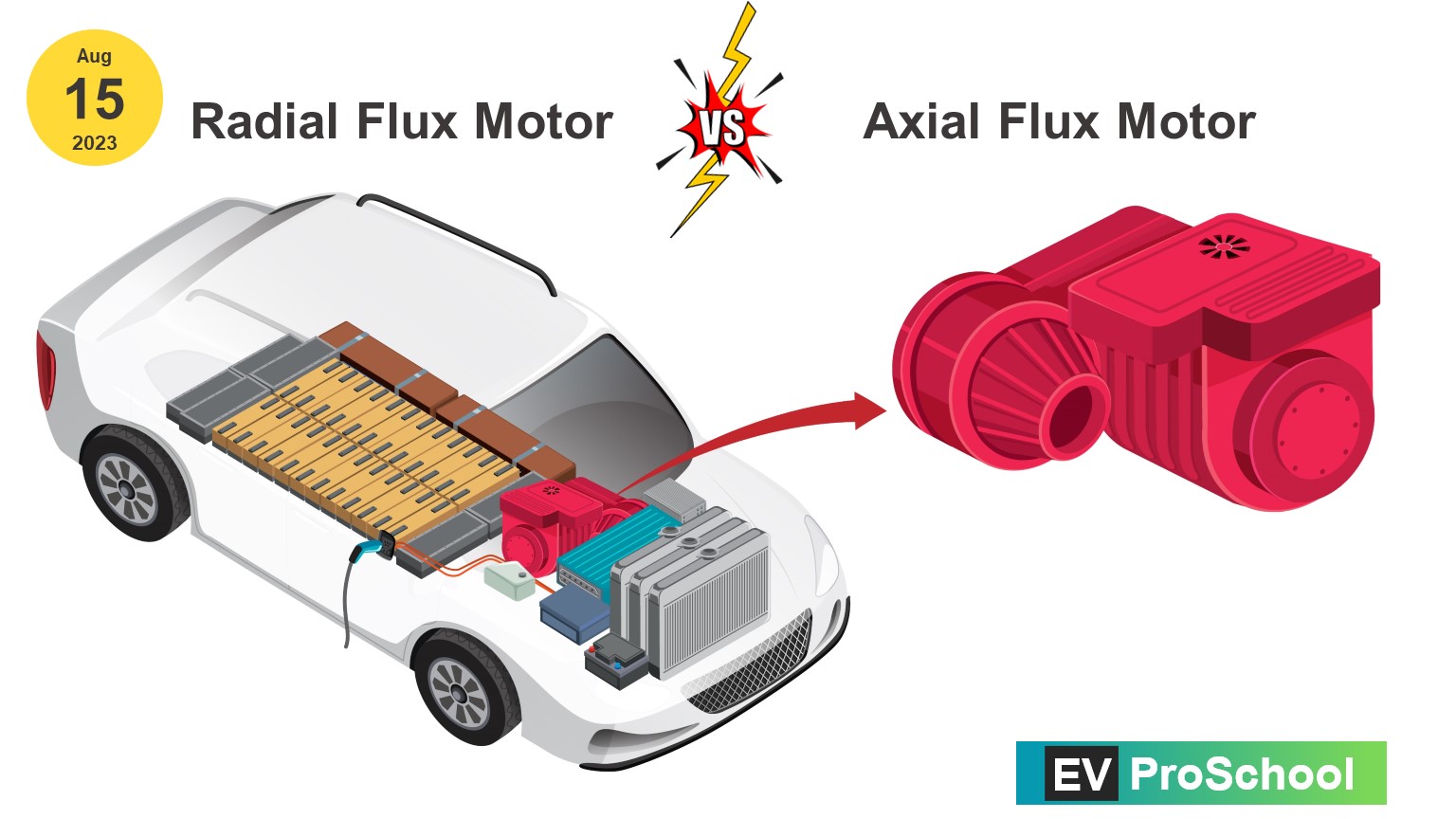We use an Induction motor in home and are familiar with it. But what about axial flux motors and radial flux motors? Are these new types of motors? The concept behind Axial Flux Technology (AFT) and Radial Flux Technology (RFT) are creating a buzz in the electric vehicle industry. These terms have become highly popular in recent discussions.
In this post, we will explore the axial vs radial motors, their key characteristics, working principles, applications, and the complexities involved in manufacturing AFT Motor.
Radial Flux Motor
The motors we commonly use in our everyday lives, such as induction motors, synchronous motors, and even brushless DC motors, are primarily radial flux motors. For example, BLDC ceiling fans widely used today, also operate using radial flux motors.
In a radial flux motor, the magnetic flux flows radially from the center toward the outer circumference. In simple words, the flux in a radial flux motor moves perpendicular to the motor’s axis of rotation.
Working Principle:
The working principle of a radial flux motor is similar to that of a DC motor or an induction motor. To better understand this, consider the example of a DC motor. In a DC motor, the stator is on the outside and consists of electromagnets, while the rotor (or armature) is inside and can either have permanent magnets or function as an electromagnet.
Advantages:
- As these motors have been in use for centuries. Over time, they have been updated to become more efficient, reliable, and robust.
- One of the key benefits of radial flux motors is their cost-effectiveness, which is largely due to their widespread manufacturing.
- These motors are easily available in the market, and their Design expertise is also readily accessible.
- Additionally, the manufacturing of radial flux motors is supported by a wide range of players, from small businesses to large-scale manufacturers, many of whom possess an average to high level of expertise.
- This local and well-distributed manufacturing base makes radial flux motors a reliable and practical choice for various applications.
Applications:
- Household appliances (e.g., washing machines, fans).
- Industrial machinery (e.g., pumps, compressors).
- Power tools.
- Small-scale renewable energy systems.
Axial Flux Motor
Axial flux motors, also known as disc motors or pancake motors, get their name from their flat, pancake-like shape. In an axial flux motor, the stator is sandwiched between two rotors. Unlike radial flux motors, the axis of the stator and rotor is parallel to the direction of the magnetic flux flow.
Working Principle:
In an axial flux motor, the stator contains windings that, when supplied with electric current, act as an electromagnet. The stator is sandwiched between two rotors, which are embedded with high-density or high-magnetic-strength magnets.
The motor operates with the help of an electronic circuit, known as the motor controller. When a three-phase alternating current flows through the stator windings, it creates a rotating magnetic field. Sensors in the motor detect the magnetic polarity of the rotors and adjust the magnetic field accordingly, attracting the North and South poles of the rotors. This interaction drives the rotation of the axial flux motor.
While the explanation may seem complex, the actual operation of an axial flux motor relies heavily on precise manufacturing. Factors like the air gap between the stator and rotors, as well as the accuracy of component alignment, play a critical role in the motor’s performance and efficiency.
Advantages:
- Higher power density, making them ideal for high-performance applications.
- Compact design, occupying less space compared to Radial Flux motors.
- Enhanced torque production compared to Radial Flux motors.
Manufacturing Complexity:
The technology required to manufacture axial flux motors is highly complex and challenging. One of the critical aspects is rotor balancing, which involves precisely aligning and positioning the rotor. This requires extremely high accuracy, as axial flux motors have two rotor discs that must be manufactured with meticulous precision.
The assembly and manufacturing of the stator windings also demand careful design and well-developed machinery. Winding the stator in an axial flux motor is a particularly intricate process. However, the most challenging part is maintaining the air gap between the stator and rotors. This air gap directly impacts the motor’s performance, making its precision crucial to the motor’s efficiency and reliability.
Due to these complexities, the manufacturing of axial flux motors is currently undertaken by only a limited number of specialized players in the industry.
Applications:
- Electric vehicles (EVs) and hybrid vehicles.
- Robotics and automation systems.
- Aircraft propulsion.
- Wind turbine generators.
Application of Axial Flux Motor
| OEM | Country | Application | Output Power |
|---|---|---|---|
| Ferrari | Italy | Hybrid supercars, including the SF90 Stradale and 296 GTB | Not specified |
| Lamborghini | Italy | Hybrid supercars, such as the Revuelto | Not specified |
| Mercedes-Benz | Germany | High-performance AMG electric vehicles | Not specified |
| McLaren | UK | Hybrid supercars | Not specified |
| Saietta Group | UK | Electric motorcycles and lightweight vehicles | 10 kW continuous output |
Summary
Both axial and radial flux motors come with their own unique set of advantages. Axial flux motors are currently under research for achieving very high voltage capabilities, while radial flux motors are already capable of operating at high voltages, especially in the passenger vehicle and bus segments where such voltage levels are essential.
Original Equipment Manufacturers (OEMs) are increasingly transitioning to higher voltage systems, leading to the widespread use of radial flux motors. It will take some time before axial flux motors become more prevalent in the electric vehicle domain. Additionally, axial flux motors with very low power ratings are not readily available in the market, which limits their application in smaller EVs.
As of now, most EVs use radial flux motors, while axial flux motors are primarily employed in high-performance and specialized electric vehicle applications.
I’d love to hear your thoughts! Please share your views in the comments below. What are your opinions on axial flux versus radial flux motors? Are there specific aspects you’d like to learn more about, such as their applications, technology, or future potential? Let me know what excites you the most about these motor technologies—I’m eager to learn from you!



